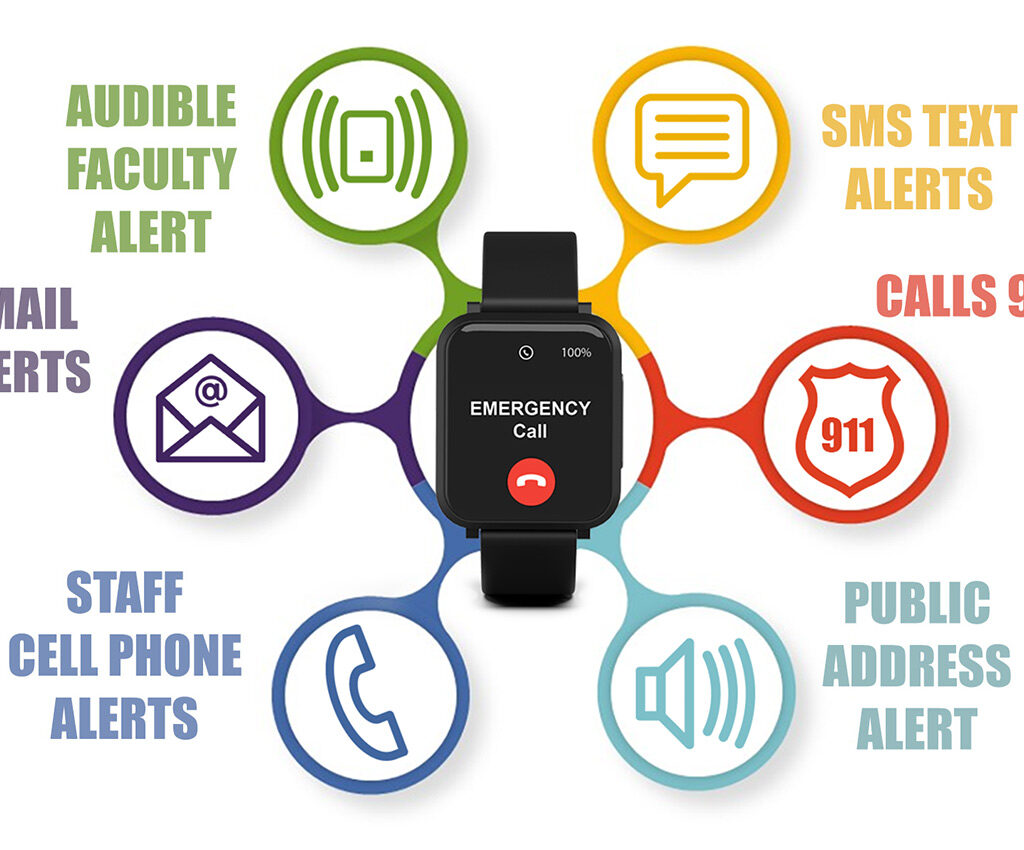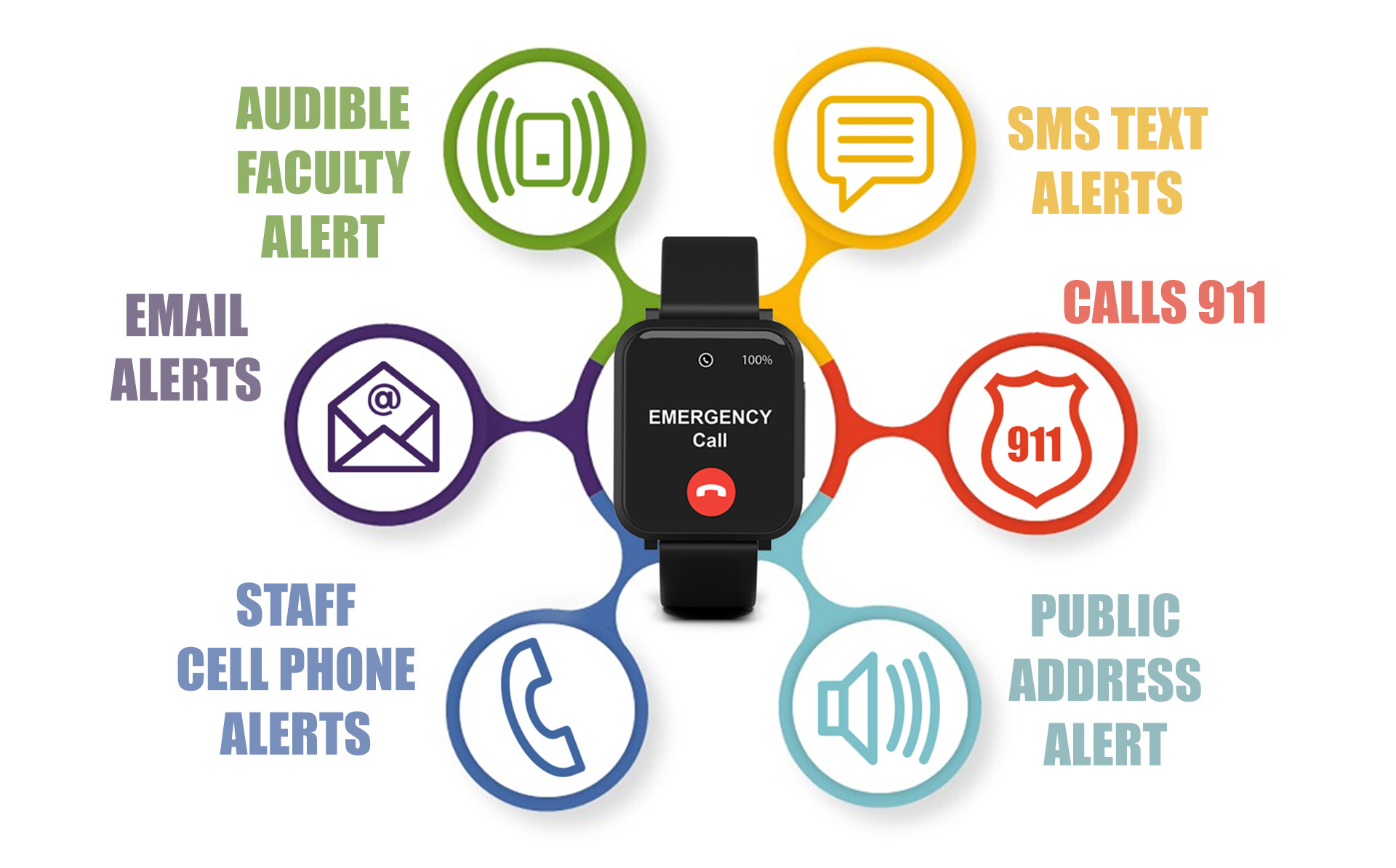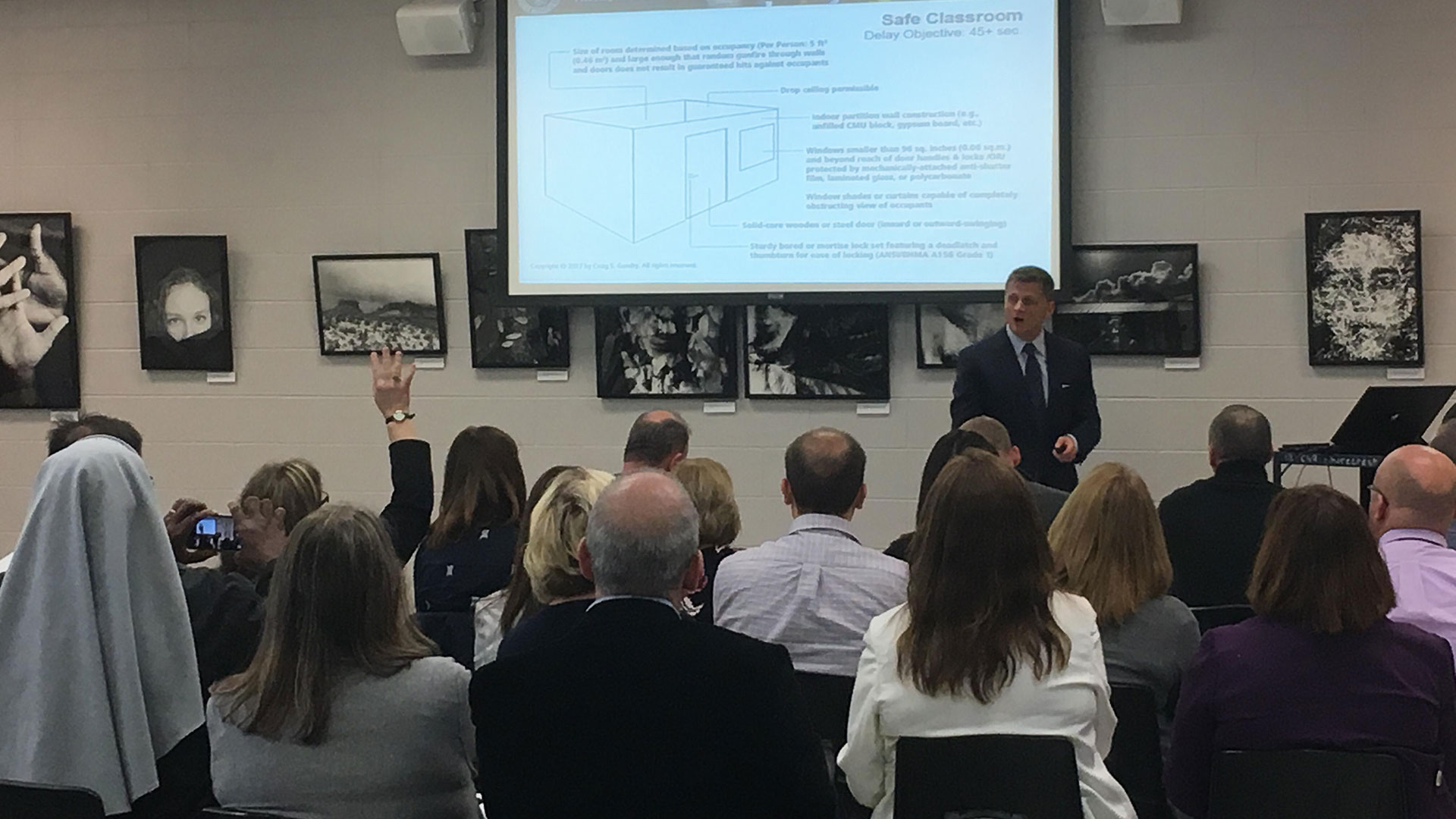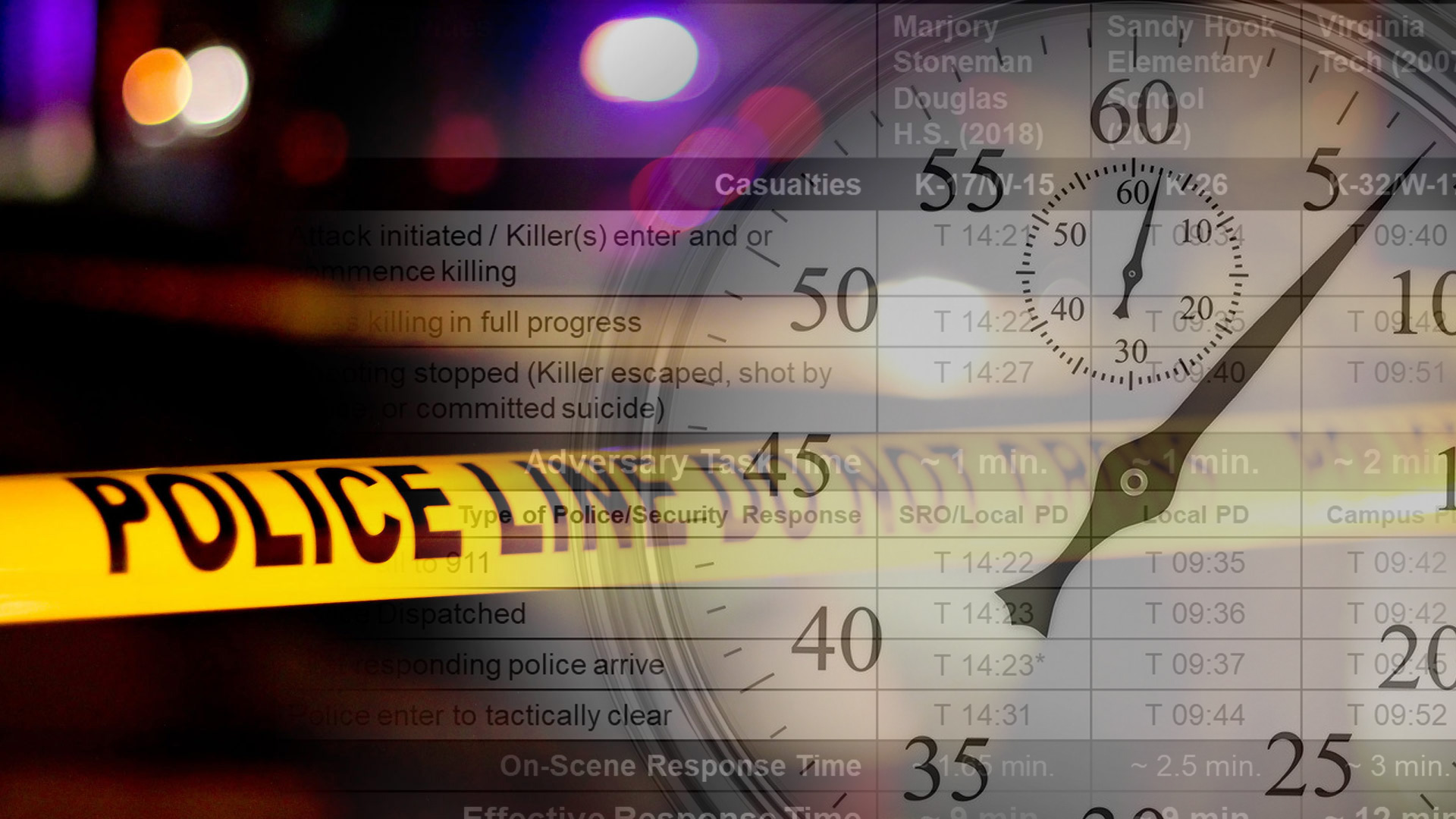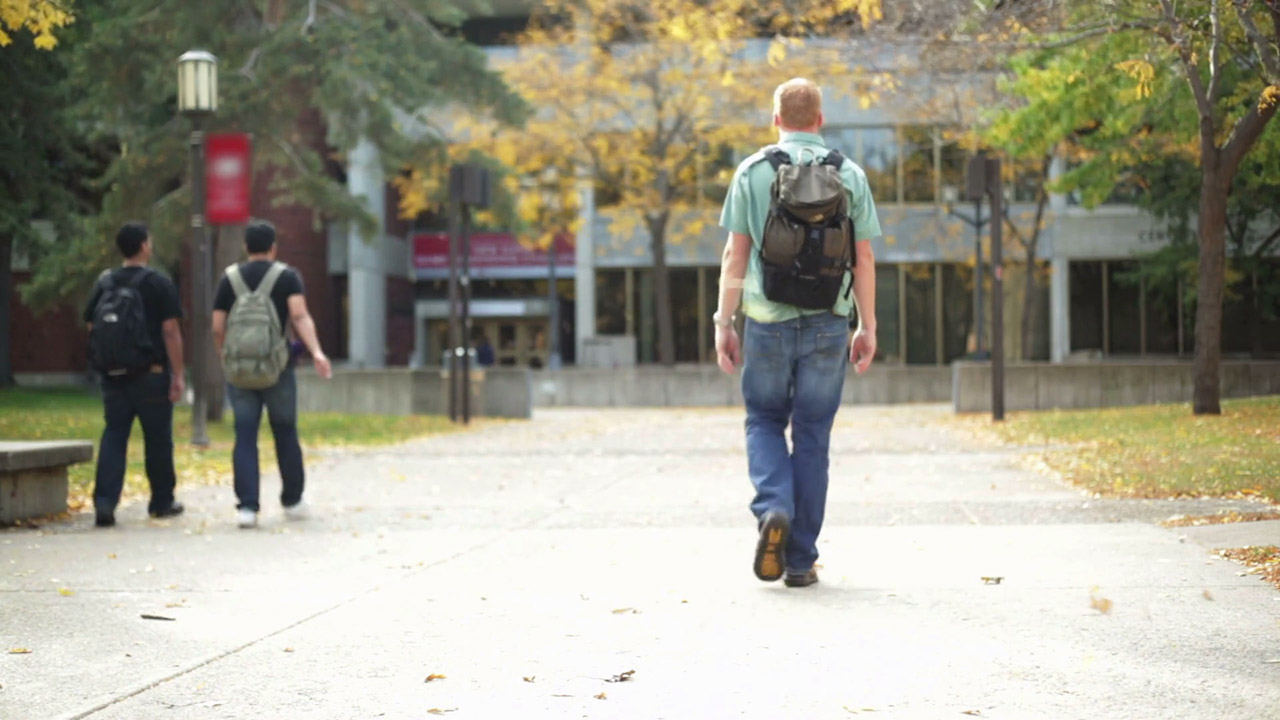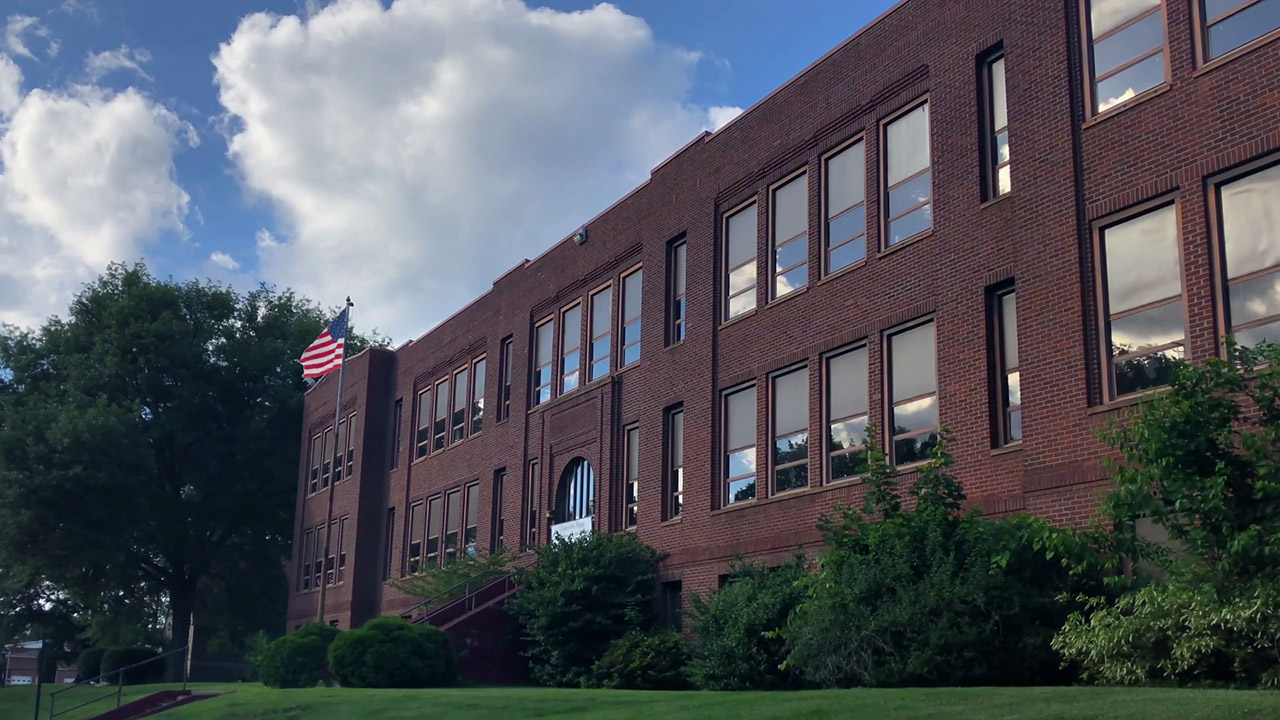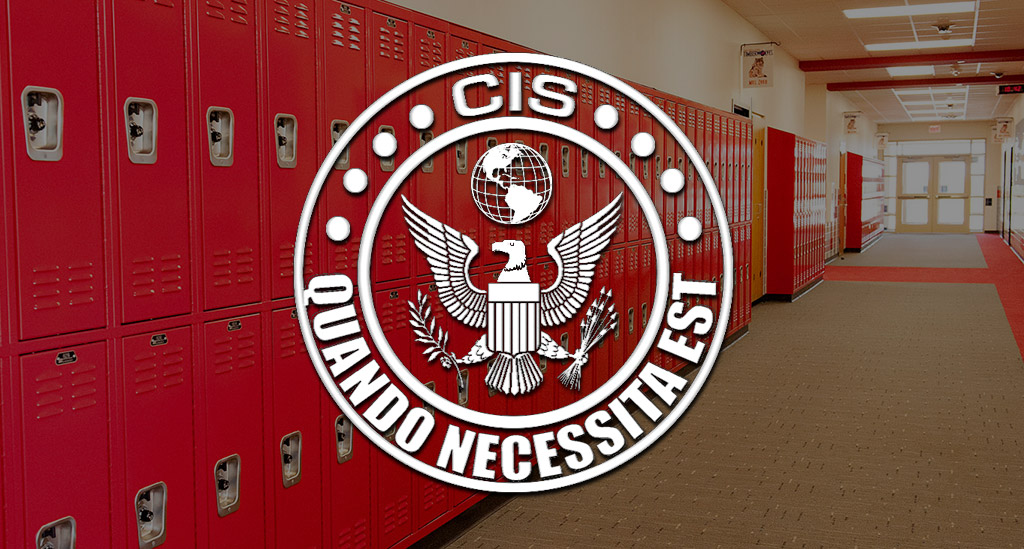- Posted on
- Craig Gundry
- 0
Performance-Based Physical Security and Schools
Robust school security and safety programs integrate a number of approaches to reduce the risk of violence. Issues such as student threat recognition and assessment, reinforcement of positive school climate and culture, egress design, effective communications systems, emergency planning, and faculty training all contribute to reducing the probability and consequences of active shooter events. However, if measures employed to prevent attacks are unsuccessful or an outsider adversary targets the school community in a manner that evades our scope of proactive influence, the integrated performance of physical security and response measures become the most critical line of defense influencing the overall consequences of an attack.
In the context of active shooter events, performance-based physical security design integrates Detection, Delay, and Response elements in a manner that mathematically reconciles the time required for an attacker to commence mass killing and the time required for response by school resource officers or responding police.
Fundamentally, physical security design is a mathematics problem defined by several key times and probabilities. In the science of physical security, the main performance metric of a Physical Protection System (PPS) is its Probability of Interruption, defined as the probability that an adversary will be detected and intercepted by a response force before he/she can complete their objective.
The most important elements determining the Probability of Interruption are the Adversary Task Time (total time required for an attacker to enter a facility and initiate mass homicide) and the time required for effective intervention by a response force (e.g., school resource officers, police, etc.). If the total time for detection, assessment, communications, and interception by the response force is longer than the adversary task time, the system will fail. Specific elements alone (such as having an access control system or CCTV cameras) mean nothing outside the context of the overall system design. Individual physical security elements must work together integrally to reconcile these key times or the adversary will succeed.
In school environments, detection during active shooter events is usually is the result of visual or audible observation when the attack commences. Detection may also result from gunshot detection systems or activation of a GuardianCall panic alarm device. The Time of Detection during an attack is represented in the diagram (below) as TD.
Once the attack is recognized, it is reported to authorities by a 911call or relayed through a security control room. The time the report is received by authorities and/or assessed by a security control room for deployment of on-site armed officers is represented in the diagram (below) as TA (Time of Assessment).
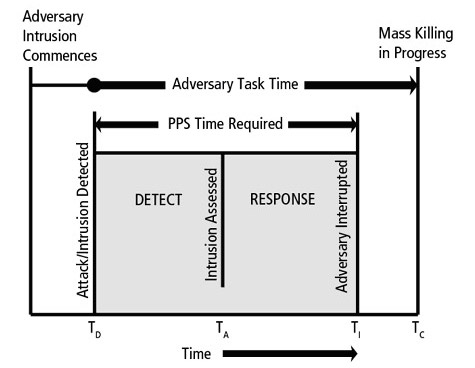
After the 911 call center or campus control room is alerted, school resource officers or local police are subsequently dispatched to intercept and neutralize the attacker. This is represented in the diagram above as the Time of Interruption (TI).
While the alert and response force deployment is in progress, the adversary must advance through barriers and distance to access targets and initiate mass killing. The time mass killing is in progress is represented in the previous diagram as Time of Completion (TC). The Adversary Task Time is the cumulative time between the Time of Detection and the Time of Completion. If the Time of Interruption is before the Time of Completion, the integrated physical security design is successful in its function of preventing mass killing.
In most previous active shooter attacks, deficiencies in one or more key functional elements (Detection, Delay, or Response) result in a situation where mass killing (TC) initiates before the response force intervenes (TI).
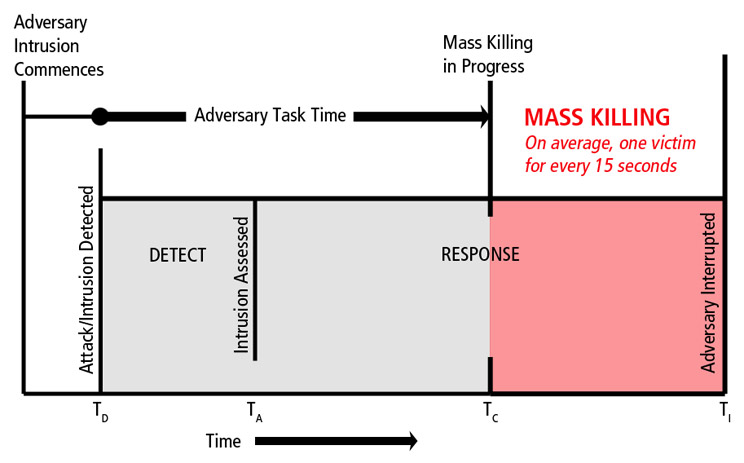
Based on data yielded during studies of previous active shooter attacks, the consequences resulting from the difference in time between commencement of mass killing and response force intervention (TC versus TI) can be estimated as one casualty per 15 seconds.[1]
Although the ideal objective of physical security design in schools is to interrupt mass killing before it commences, real world conditions often limit the possibility of achieving a high Probability of Interruption. Nevertheless, all measures that increase Adversary Task Time and improve response time have a direct benefit in reducing potential casualties by narrowing the gap between TC and TI.
Sandy Hook Elementary School, 14 December 2012
A Case Study of Performance-Based Physical Security Principles in Schools
At 9:34 AM, Adam Lanza bypassed the school’s locked entrance doors by using an AR-15 rifle to shoot through a tempered glass window providing passage into the lobby.[2]
After killing the principal and a school psychologist and injuring two other staff members who entered the hallway to investigate, Lanza entered the main school office. Meanwhile, staff members hidden inside the school office and nearby rooms initiated the first reports to 911. Faculty located in other parts of the school were initially alerted when the ‘all-call’ button on a telephone was accidentally activated during a 911 call.
After finding no one in the office, Lanza returned to the hallway and entered into the unlocked door of first grade classroom 8 where mass homicide commenced (approx. 09:36[3]). In less than two minutes, Lanza killed two teachers and fifteen students.
As the attack in classroom 8 was in underway, teacher Victoria Soto and an assistant in classroom 10 concealed children in cabinets and a closet.
After exhausting targets in classroom 8, Lanza entered the unlocked door of classroom 10 and killed Ms. Soto, assistant Anne Murphy, and five children. Although the exact reason Ms. Soto did not lock the door is unknown, all classrooms at Sandy Hook Elementary School featured ANSI/BHMA “classroom-function” locks which can only be locked with a key from the hallway-side of the door.

The tragedy ended in classroom 10 when Lanza committed suicide at 9:40AM while police were preparing for entry into the building.
As common in U.S. primary schools, Sandy Hook Elementary depended on off-site police as their response force during emergencies. Response was first initiated at 9:35AM when a staff member first reported the situation to 911. At 9:36AM, the 911 operator broadcast the alert by radio dispatching nearby patrol units to the school. The first officer arrived at 9:39AM, followed immediately by two additional units. After assessing the scene and locating a point of entry, the officers organized into a contact team, entered the school, and arrived at classroom 10 at 9:44AM.
In the context of physical security performance, the adversary task time (the time between when Lanza’s entry commenced and mass homicide was in progress) at Sandy Hook Elementary School was approximately 23 seconds. The time between detection of the attack and on-site arrival of responding police was approximately three minutes. However, there was an additional five to six minutes of time as officers assessed the situation, organized into a team, entered, and effectively moved to Lanza’s physical location in classroom 10.
When assessing incidents involving response by off-site police officers, the time of arrival at the school is irrelevant. What matters is the time police arrive at the physical location of the attacker ready to neutralize the threat. This is the difference between On-Site Response Time and Effective Response Time. At Sandy Hook Elementary School, the Effective Response Time is estimated at nine minutes.
Mitigating the consequences of school violence through effective physical security design and emergency procedures
When viewed through the prism of physical security science, failure in the Newtown was the result of inadequate delay in relation to the time required for response by off-site police. When the attack is analyzed using Sandia’s Estimate of Adversary Sequence Interruption (EASI) Model, the original physical security design at Sandy Hook Elementary School would have had a Probability of Interruption of 0.0006 (Very Low).
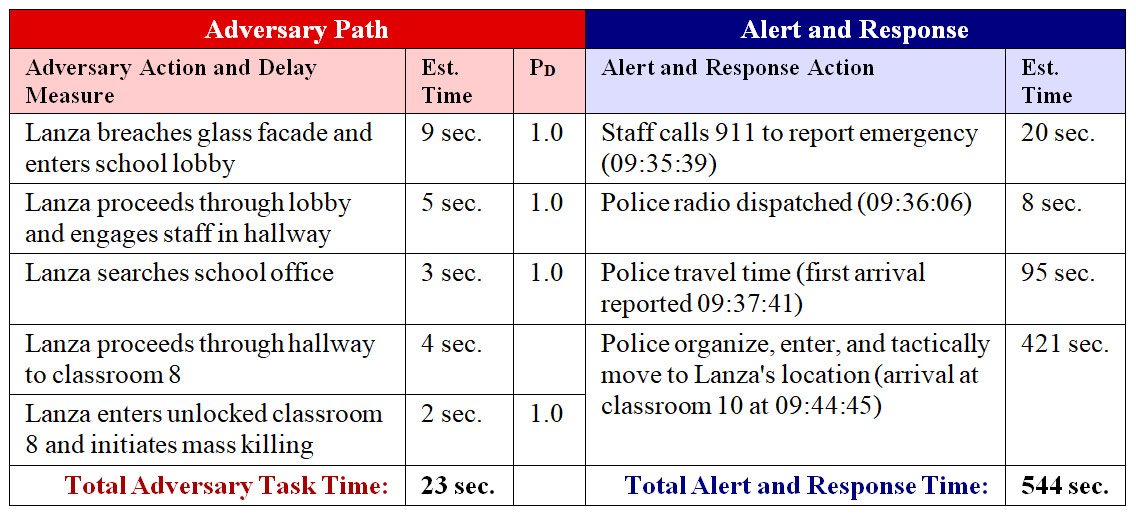
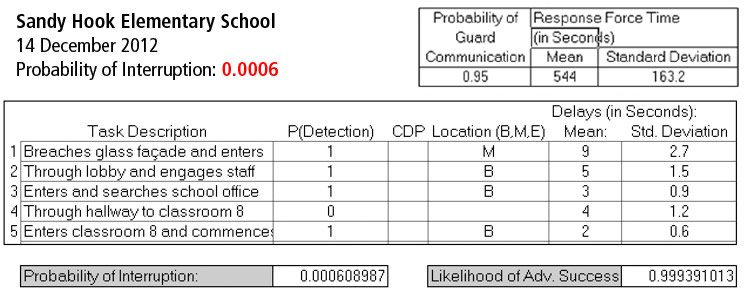
In case of Sandy Hook Elementary School, there are several physical security measures that could have improved overall performance.
1. Upgrade the exterior school facade with intrusion-resistant glazing. Adam Lanza entered the school by bypassing the locked entrance doors and shooting a hole through the adjacent tempered glass window. He then struck the fractured window and entered through the breach. Tempered glass is only 4-5 times as resistant to impact as annealed glass and provides little delay against forced intrusion. According to testing documented by Sandia National Laboratories, 0.25 inch tempered glass provides 3-9 seconds of delay against an intruder with a fire axe and the mean delay time for penetrating 1/8″ tempered glass with a hammer is 30 seconds.[7] However, testing documented by Sandia did not account for the fragility of a tempered glass specimen after penetration by a firearm projectile. In tests our organization conducted of 1/4-inch tempered glass windows using two shots from a 9mm handgun to penetrate glazing prior to impact by hand, the total time to breach the window was only 10 seconds.[5]
Upgrading building windows with the use of mechanically-attached anti-shatter film could have improved delay time by approximately 60-90 seconds.[6]
2. Construct an interior “protective layer” to delay movement from the lobby into occupied classroom hallways. Once Lanza breached the exterior facade and entered into the lobby, there were no additional barriers delaying access into areas occupied by students and faculty. Many active shooter attacks by “outsiders” (those who do not work or attend class in the facility) originate through main entrances and progress into occupied spaces.[8] A few examples include attacks at the Riena Nightclub (2017), Pulse Nightclub (2016), Inland Regional Center (2015), Charlie Hebdo Office (2015), Colorado Springs Planned Parenthood (2015), Canadian Parliament Bldg (2014), and the US Holocaust Memorial Museum (2009).
An ideal school lobby is designed to facilitate reception of visitors while securing the interior of the school through a protective layer (wall and door system) constructed of intrusion-resistant materials. Depending on materials, a wall and door system securing classroom hallways could have delayed Lanza’s progress by an additional 60-120 seconds.
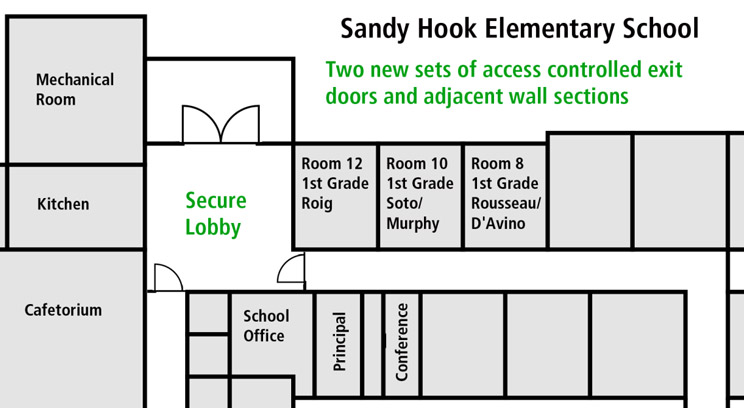
Replace “classroom-function” locks on school doors with locks featuring a button or thumbturn for locking. All classroom doors inside Sandy Hook Elementary were equipped with “classroom-function” locks (ANSI mortise F05 and bored F84). These are the worst choice of locks possible for lockdown purposes during active shooter incidents. In a number of previous school shootings, doors equipped with classroom-function locks remained unlocked due to difficulty locating or manipulating keys under stress. In addition to Sandy Hook Elementary, another incident where this situation contributed to unnecessary casualties was the 2007 Virginia Tech attack.[9] In these two events alone, 26 students and faculty were killed and 24 wounded specifically because classroom doors could not be quickly and easily secured.
Effective specifications for door locks would be ANSI/BHMA A156 Grade 1 with an ANSI lock code of F04 or F82.[10] Mechanical locks rated ANSI/BHMA Grade 1 have been successfully evaluated under a variety of static force and torque tests. Locks coded as F04 and F82 feature buttons or thumb turns for ease of locking under high stress conditions.
Although there are no documented forced entry delay times against ANSI/BHMA A156 Grade 1 rated locks, it is estimated that a committed attacker using impact force with no special tools could penetrate improved locks in approximately 90-110 seconds.
Replace door vision panels with intrusion-resistant glazing. During the attack at Sandy Hook Elementary, Lanza was able to enter classrooms 8 and 10 directly through unlocked doors. If these classrooms were locked, the wired glass vision panels on classroom doors could have been breached to facilitate entry in 20-30 seconds.
Effective physical security design ensures that all barriers composing a protective layer are constructed of materials with similar delay time values. This could be accomplished by ensuring that door vision panels are no wider than 1.5″ (3.8 cm) or constructed of intrusion-resistant glazing such as laminated glass, polycarbonate, or anti-shatter film.
If the barrier improvements described in this article were employed in the physical security design at Sandy Hook Elementary, Lanza’s access into occupied classrooms would have been delayed by an additional 162-312 seconds. This would have improved the overall performance of the system by potentially increasing the Adversary Task Time to 185-335 seconds before mass homicide was in progress. Although this is a noteworthy improvement from the original Adversary Task Time (~ 23 seconds), 335 seconds is still less than the effective response time of police during the incident (~ 544 seconds).
In many cases, accomplishing a performance-based goal of interrupting an active shooter before mass killing is in progress requires a combined approach aimed at both increasing delay time and decreasing response force time. In the case of Sandy Hook Elementary School, decreased response time could have been aided by the use of GuardianCall devices, gunshot detection technology, and similar technologies. Any measure that decreases alert notification and response time has a measurable benefit in system performance. Even if enhancements only reduce response time by 10 or 15 seconds, such improvements have the theoretical benefit of reducing casualties by one victim per fifteen seconds of improved response time.
In the situation of Sandy Hook Elementary School, a major improvement could have also resulted from having an on-site response force (e.g., SRO, armed security officer, etc.) capable of reliably responding anywhere on the campus within 120 seconds of alert.[11] If this measure were implemented, the total estimated alert and response time could have been reduced to 147-157 seconds. When compared to the increased Adversary Task Time of 206-316 seconds, the improved physical security design would have likely resulted in Lanza’s interception before mass killing commenced. When analyzed using Sandia’s Estimate of Adversary Sequence Interruption (EASI) Model, the improved physical security design would have resulted in a Probability of Interruption of 0.87 (Very High).
The following table illustrates the sequence of the original attack at Sandy Hook Elementary School with the physical security improvements described in this article as an example of how performance-based design can greatly influence the outcome of armed attacks.).
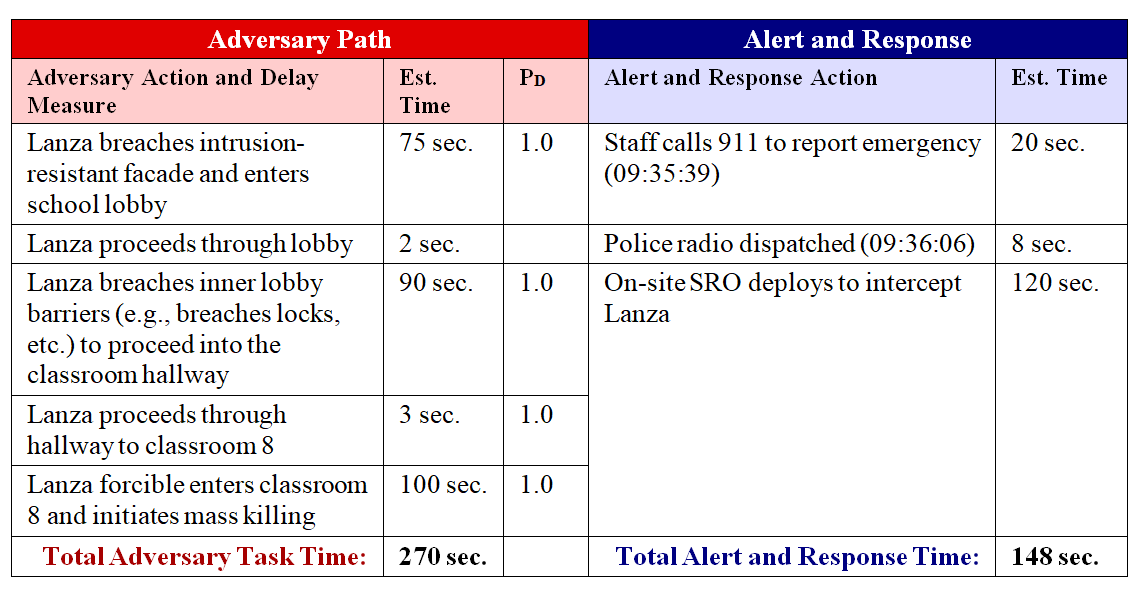
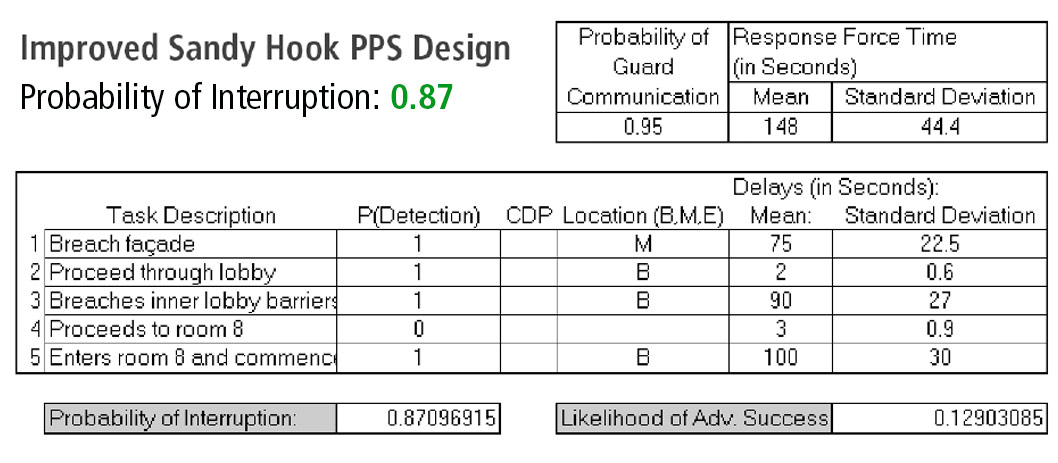
The importance of expediting response time as emphasized in this article was our first priority in designing the GuardianCall panic alarm and emergency alert system. Click here to learn more about GuardianCall.
[1] Anklam, Charles, Adam Kirby, Filipo Sharevski, and J. Eric Dietz. “Mitigating Active Shooter Impact: Analysis for Policy Options Based on Agent/computer-based Modeling.” Journal of Emergency Management 13.3 (2014): 201-16.
[2] Sedensky, Stephen J. Report of the State’s Attorney for the Judicial District of Danbury on the shootings at Sandy Hook Elementary School and 36 Yogananda Street, Newtown, Connecticut on December 14, 2012. Danbury, Ct.: Office of the State’s Attorney. Judicial District of Danbury, 2013. Print.
[3] Time estimated based on witness event descriptions and assessment of time required to walk through the school office and down the corridor to classroom 8.
[4] Barrier Technology Handbook, SAND77-0777. Sandia Laboratories, 1978.
[5] Critical Intervention Services assisted a window film manufacturer in 2015 in conducting a series of timed penetration tests of 1/4-inch tempered glass windows with mechanically-attached 11 mil window film. The tests involved penetration by firearm followed by impact (kicking and rifle buttstock). The delay times ranged from 62 to 94 seconds and deviated according to the aggression of our penetration tester.
[6] Ibid.
[8] Gundry, Craig S. “Analysis of 20 Marauding Terrorist Firearm Attacks.” Preparing for Active Shooter Events. ASIS Europe 2017, 30 Mar. 2017, Milan, Italy.
[9] Mass Shootings at Virginia Tech. April 16, 2007. Report of the Review Panel. Virginia Tech Review Panel. August 2007. pp.13.
[10] ANSI/BHMA A156.13, Mortise Locks and Latches. Builders Hardware Manufacturers Association (BHMA), New York, NY, 2011.
[11] CIS Guardian SafeSchool Program® standards define a performance benchmark of 120 seconds as the maximum time for acceptable response by on-site officers. However, achieving this type of response time in many facilities requires careful consideration of facility geography, communications systems, access obstructions, and officer capabilities (e.g., training, physical conditioning, etc.
